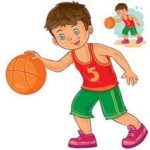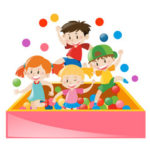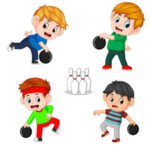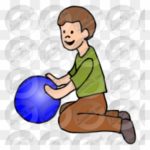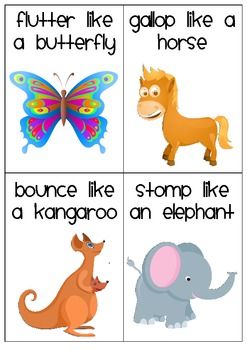
Animal Walk – Galloping Horses
Aim
Students will be able to perform the locomotor skills and will be able to call out what letter (or number) they have landed on
Equipment Required
- Four cones for boundaries (same color).
- Spot marker for every kid.
- Music Player & pen drive.
- Skill Cards of a horse galloping.
- Hula-hoops.
- Ropes
Play Area Set-Up
Layout letter cards over a large area. Show students the area around the cards where they will be walking/running and other locomotor skills
Activity Description
- Today we are going to learn how to gallop, just like a horse!
- Demonstrates how to gallop: USE RELEVANT SKILL CARDS
- In galloping, you step forward with one foot that is always your “lead” foot.
- The toes of your back foot chase the heel of your lead foot, like skipping.
- Both feet leave the ground, and you land on your back foot, followed by your lead foot.
- When galloping, point both feet forward. Arms swing forward at the same time the back foot moves forward. Head up and look forward.
Practice:
- Ask children to gallop in a line to the opposite side of the activity space.
- Gallop alongside any children who have difficulty (model the movement).
- With a partner, children spread out around activity space and practice the “step-toe-to-heel” pattern.
- Invite children to gallop and work together to make shapes as they gallop (circle, figure eight, triangle, following a line on the floor
- Leaders should encourage children to try galloping with opposite foot leading.
Lets Play Game: Galloping horses relay race
- Divide children into 4 or 5 groups with even numbers.
- Designate a start line at one end of the activity space.
- For each group, the leader places a cone at the other end of the activity space to mark their turn-around point.
- Groups line up behind the start line.
- Each group has one skipping rope which will be used as the “reins” to lead the horse.
- The first person in line is the horse, and they place the reins around their waist.
- The second person in the line holds the reins as if they are guiding the horse.
- In pairs (horse and guide), children gallop around the turn around point and back to the start.
- When they reach the start line, they pass the reins to the next pair in their group.
- The first group to have every pair complete the course wins.
Wrap-up (2 minutes)
- Call the children back into a circle and review what they learned today.
- Why is it important to swing your arms when you are galloping?


